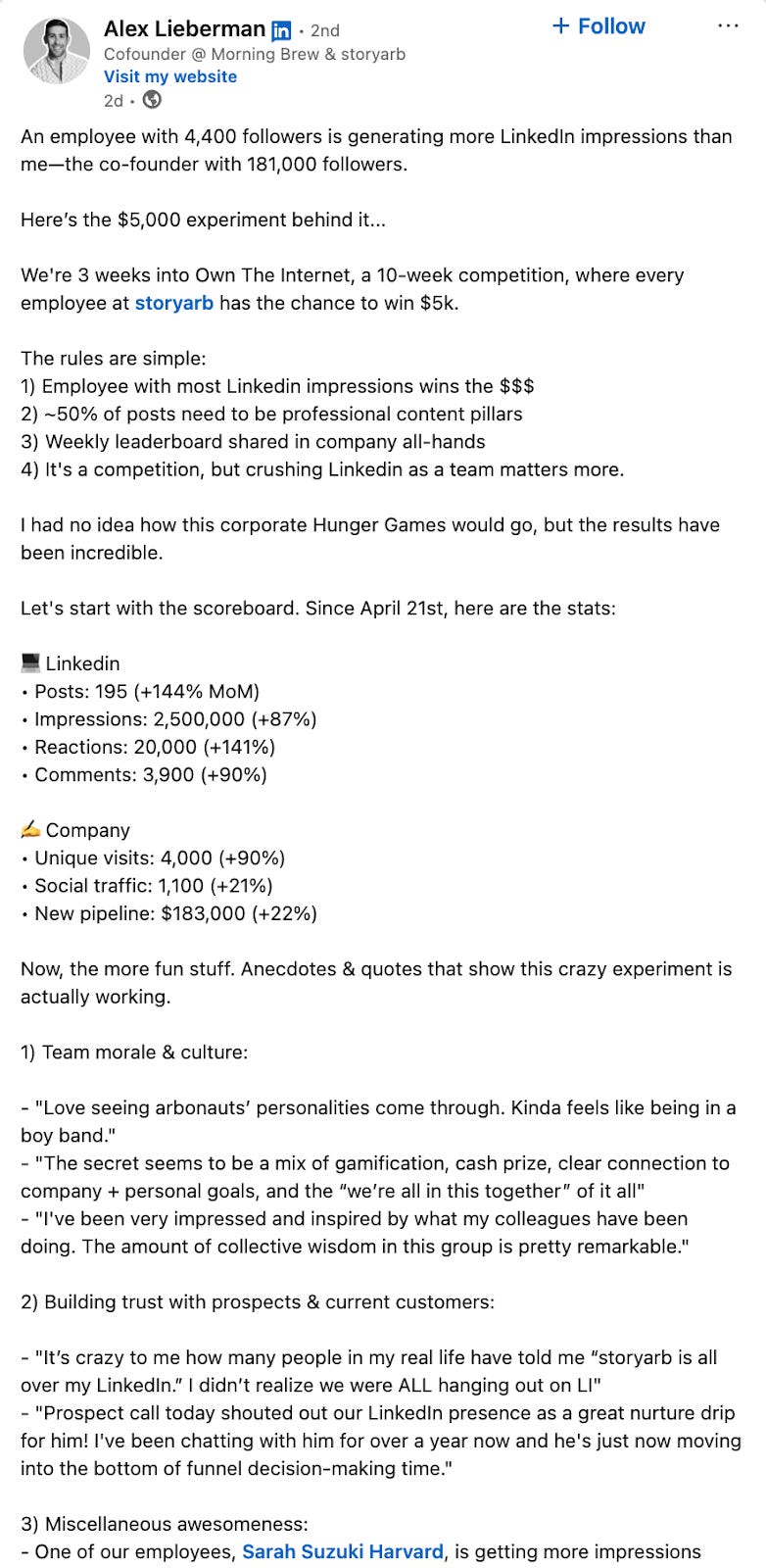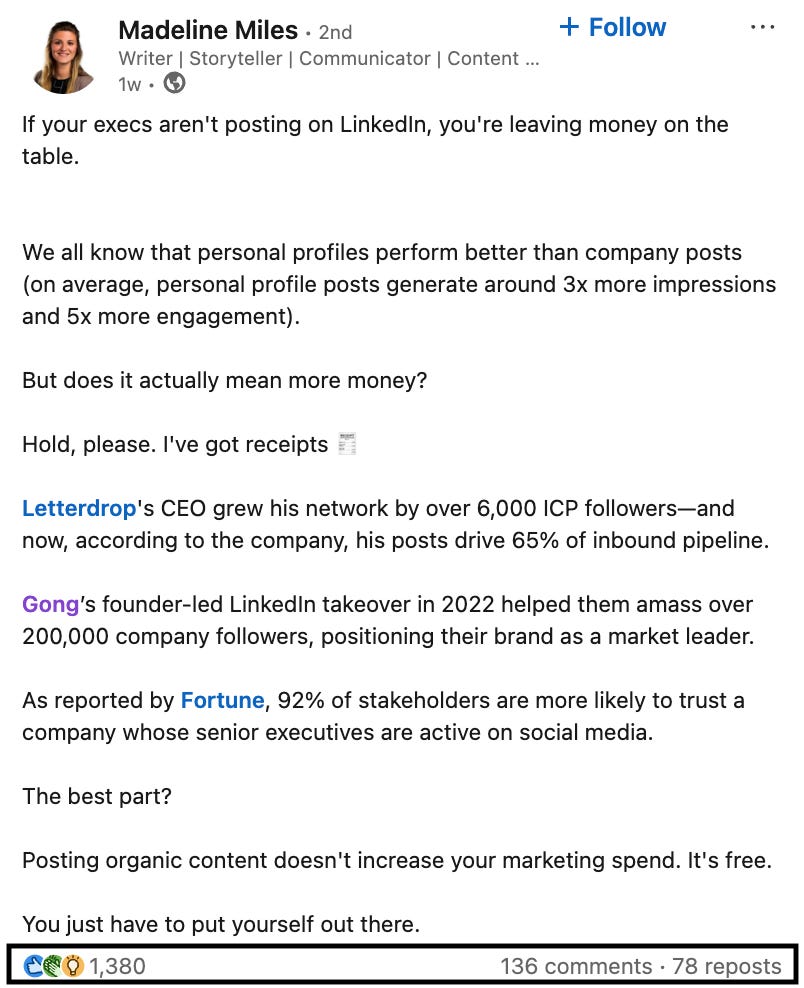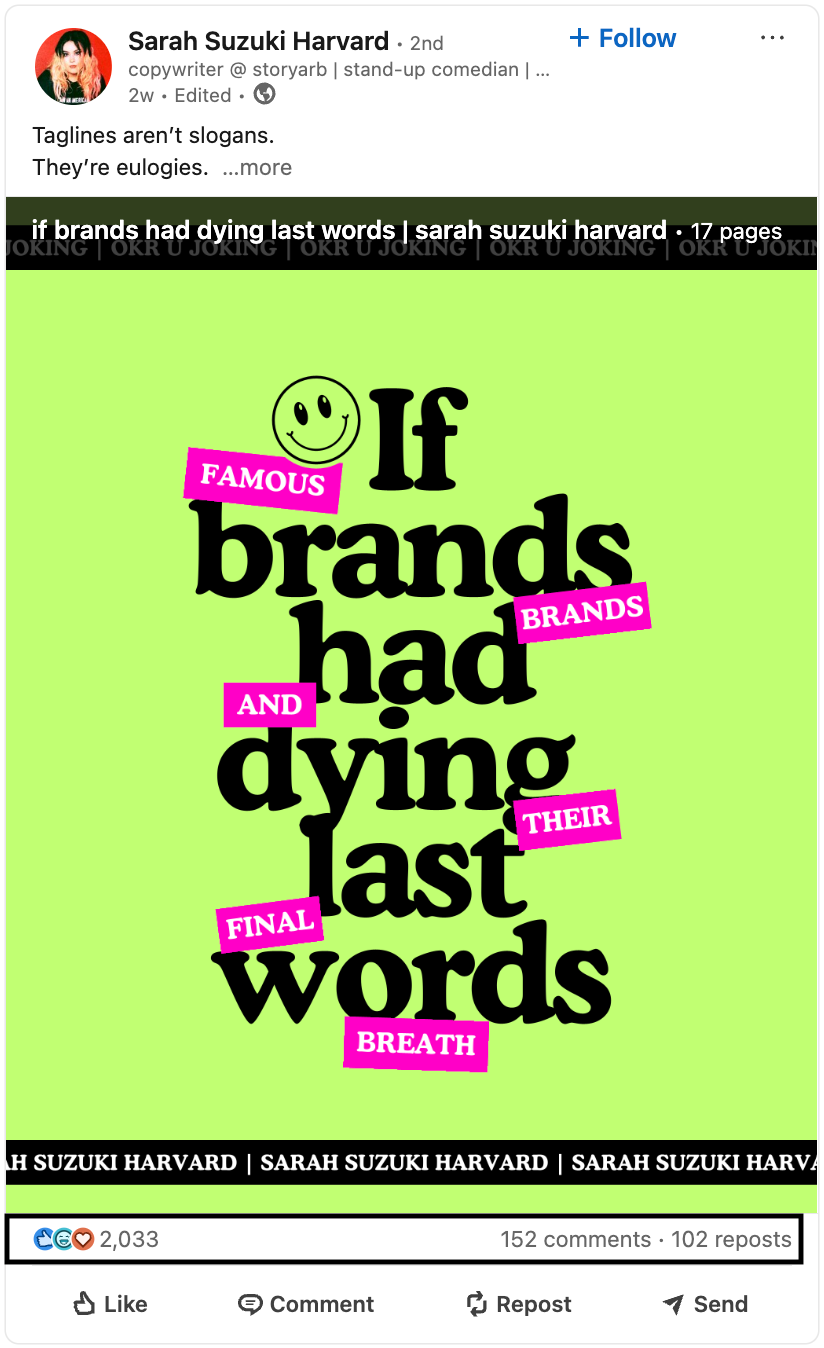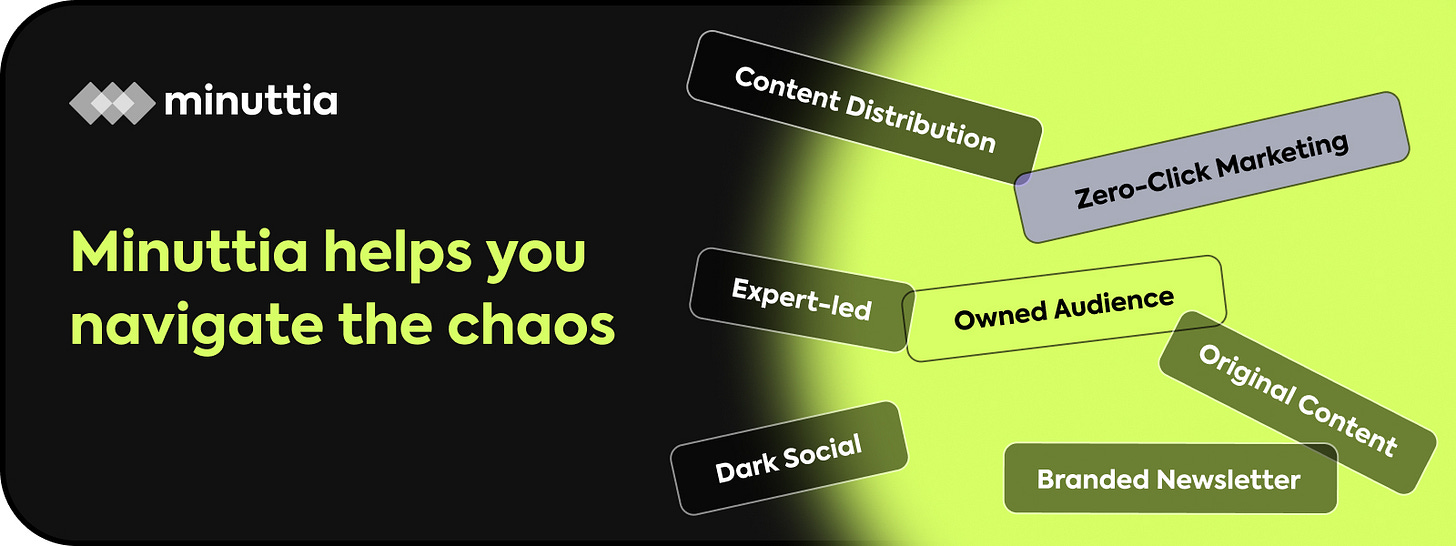Own the internet
The $5K experiment that boosted impressions, traffic, and pipeline
👋 Hey, I’m George Chasiotis. Welcome to GrowthWaves, your weekly dose of B2B growth insights—featuring powerful case studies, emerging trends, and unconventional strategies you won’t find anywhere else.
This GrowthWaves note is brought to you by Minuttia.
Content marketing has changed a lot in the past couple of years.
Two main reasons for this:
AI coming into the mainstream, and
The evolution of the search engine landscape.
Most marketers are lost in the Amazon River without a compass in this complicated environment.
And that’s okay because all these changes are too much to handle and keep up with.
Minuttia is a growth-oriented content marketing agency.
Our strategies are channel-agnostic, forward-looking, and adapted for the now.
Take a look at the website, and if you’re interested, request a call.
Let’s face it:
Most people working at a company don’t like posting on LinkedIn.
Which is why they’re not doing it.
Which is why companies doing it win big (in most cases).
Which leaves companies that aren’t doing it feeling frustrated.
Which makes their C-suite or leadership teams look for ways to change it.
Which is what we’re going to discuss today.
Who owns the internet?
You’ve seen the posts. The engagements. The excitement.
And then you Slacked your trusted team members:
“Hey, have you seen that ‘GTM Alpha’ thing Clay launched? It’s all over LinkedIn.”
Yeah, I know.
But here’s the thing:
There’s a reason why most companies are fascinated by the buzz companies like Clay generate on LinkedIn.
And that is that it’s NOT common.
Because for most companies, the organic social game looks like this:
New CMO comes in and has alignment chat with CEO
CEO explains that one of the things that needs to change is the company’s LinkedIn game; “we need to be more like Clay”
CMO then drafts a document (with screenshots from “companies doing it right”) and organizes workshop for the whole team
Team gets excited, and the document is pinned in the #social-media Slack channel for everyone to reference
Four months later, no one ever posted because “it’s not really a priority until we hit our pipeline goals for the year”
Sounds familiar?
Yeah, I thought so.
The thing is, that’s a question I also get as part of my role.
“What can we do to get people in the LinkedIn game?”
And, honestly, it’s something I’ve been very frustrated with myself over the years.
“Why don’t people understand that posting on LinkedIn is to the company’s and, as an extension, to their benefit?”
And then it hit me:
You can’t change human behavior—or to put it simply, people rarely change.
(And that is regardless of how hard you may try, and trust me, I had to learn this the hard way on many different occasions all these years.)
So, you can’t change it.
But you can just incentivize it.
That’s who
Last week, I came across a viral LinkedIn post.
It was one of the few posts I bookmarked that week.

Let me unpack this for you.
Alex Lieberman, who previously co-founded Morning Brew, is running a content agency.
He decided to run a simple experiment:
Give one of his employees a $5,000 prize, based on the following rules (I quote directly from the post):
Employee with most Linkedin impressions wins the $$$
~50% of posts need to be professional content pillars
Weekly leaderboard shared in company all-hands
It's a competition, but crushing Linkedin as a team matters more.
Here’s an example of a post from one of Alex’s employees on LinkedIn:

That’s from a profile with 2,668 followers as of writing this.
And another one from a profile with 4,827 followers:

The first numbers (after three weeks of running this experiment) are in (again, I quote):
Posts: 195 (+144% MoM)
Impressions: 2,500,000 (+87%)
Reactions: 20,000 (+141%)
Comments: 3,900 (+90%)
Cool, right?
Especially at a time when everyone’s saying “LinkedIn reach is down.”
But, most importantly, when it comes to business impact like traffic to the company’s website and pipeline generated, Alex reported the following:
Unique visits: 4,000 (+90%)
Social traffic: 1,100 (+21%)
New pipeline: $183,000 (+22%)
Author’s Note: I’m not exactly sure what ‘social traffic’ refers to, but I assume it’s referral traffic from social sources, as reported by Google Analytics or another website analytics provider.
So, this LinkedIn thing is kind of real, right? Especially if you can generate pipeline (which most C-Suite execs and founders are interested in).
Yes, it’s real.
My take
To begin with, I want to make one thing very clear:
I’m not saying this experiment was successful only because of the monetary prize.
Outside of the online bubble most of us live in, $5,000 is a lot of money, but that’s not the only reason the experiment succeeded.
There’s a competition element to it, sure.
But, it’s also fun and creates a sense of community as I see it.
Sure, when all that fades, it will be business as usual.
But something may stay.
Certain employees participating in this may see the potential of posting on LinkedIn, not just to drive visits to the company’s website but also to build their own personal brand.
This is one of the best levers you have as an employee if you're working at a company, unless you haven't understood it already.
Yes, you’ve been with the company for years, and yes, you’ve got the skills—and even that AI certification.
Fair enough.
But where things are heading, employers value engaged audiences equally, if not more than they value the rest of your CV.
I’ll leave you with this:
If you’re an employee
Help the company you’re working for by being more active online, but also, and most importantly, do it for yourself.
Building an audience will be one of the most rewarding things you’ve done in your career because it creates (as people like to say nowadays) career optionality, which can be the foundation for many great things.
If you’re an employer
You can’t change human behavior, but you can incentivize it in innovative and creative ways.
Don’t push anyone to do something they don’t want or feel like doing.
Even with incentives in place, you’ve got to let people choose for themselves.
Let’s wrap this up.
Instead of final thoughts
I have many more things I want to say about this topic.
Because it’s multi-dimensional and there’s so much depth in it.
So, maybe a Substack note isn’t the ideal format.
If you want to hear more about it, let me know in the comments.
We may put together a workshop, AMA, or something else.
Thank you for reading.



There are a few more ways to increase social posting.
- Hold catch up calls weekly
- Give materials to help
- Celebrate victories and success (both monetary and non monetary celebrations)
- Support the team with feedback, advice, and examplss
- Shoutouts internally e.g. on Slack
- Clearly explain the benefits to the employees (if its sales is more leads for them, if its others is growing professionally)
All you need is a system, buy in, and supporting it.
Thank you George - this has been the first take that's actually convinced me why it's worthwhile. I've cringed or recoiled from "building your personal brand" because it felt largely self-involved, which isn't my speed. Having said that, I definitely would love to know more on the how in a way that can be genuine rather than gimmicky because your perspective is refreshing!